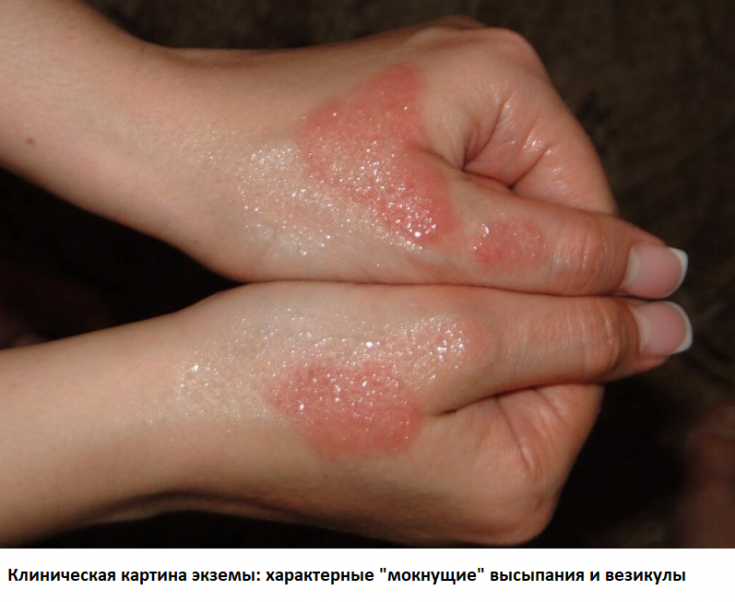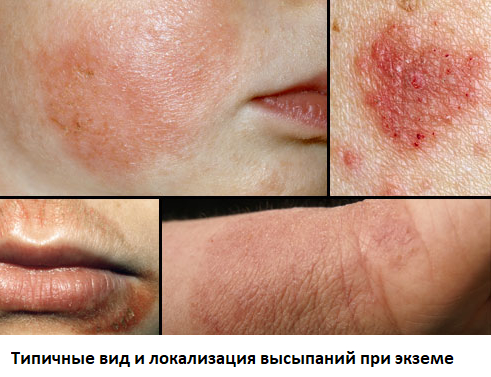Eczema – chronic relapsing inflammatory skin disease characterized by the development of a polymorphic pruritic rash with vesicles, scales and lichenifications.
Eczema occurs in all age groups of the population, but is most often diagnosed in children. Thus, in 85% of cases, eczema is first diagnosed before the age of 5 years.
This article on estet-portal.com describes current ideas about the causes of eczema, as well as diagnostic criteria and evidence-based approaches to the treatment of the disease.
Modern understanding of the causes of eczema symptoms
According to modern scientific concepts, the development of eczema is based on a genetic predisposition to insufficient synthesis of the filaggrin protein.
Filaggrin – a protein in the stratum corneum of the skin that interacts with keratins and provides mechanical epidermal protection.
In addition to filaggrin deficiency, eczema patients also present with lower levels of natural moisturizing factor and extracellular lipids – ceramides.
Follow us on Facebook
Understanding the etiopathogenesis of eczema is the basis for prescribing an effective treatment for this disease, which will be discussed in more detail below.

Etiopathogenesis of eczema: hypersensitivity and skin sensitization
Deficiency of filaggrin, ceramides and natural moisturizing factors are the causes of increased trauma and skin sensitivity to environmental factors.
Due to the degradation of the mechanical epidermal barrier, prolonged exposure of antigens occurs and, as a result, – skin sensitization to them.
All these processes lead to the development of a complex of immunopathological reactions, manifested by the clinical picture characteristic of eczema: dryness, itching and polymorphic skin rash.
When the skin "boils": features of the diagnosis and treatment of true eczema
Diagnosis of eczema: criteria of the Danish Allergy Research Centre
There are a number of diagnostic criteria for eczema. The following are the diagnostic criteria for eczema from the Danish Allergy Research Centre:
- History of itching within the last 3 months or presence of visible scratching at the time of examination;
2a. Involvement in at least two of the following four areas:
• face or neck;
• torso;
• flexion or extensor surfaces of the arms;
• flexion or extensor surfaces of the legs;
2b. History of eczema in at least two of the following five areas within the past 3 months:
• ulnar and popliteal fossae;
• wrists or ankles;
• face or neck;
• hands, arms or legs;
• torso;
3. Ongoing itchy eczema for the last 6 weeks.
Eczema of the skin from nerves? Quite simple

Treatment for eczema: emollients and topical hormones
Eczema is treated with emollients and topical hormonal therapy.
Emollients help restore the epidermal barrier and improve skin resistance to environmental factors.
Emollients must be used daily. The presence of ceramides in the composition of emollients helps to reduce the severity of itching in patients with eczema.
The use of local hormonal preparations helps to reduce the severity of itching and inflammation in eczema. To control the disease, it is enough to use them only during an exacerbation.
A recent Cochrane review of the efficacy of systemic antihistamines in the treatment of eczema showed low evidence for H1-histamine blockers.
Thus, systemic antihistamines should not be used in the treatment of eczema. Thank you for staying with estet-portal.com. Read other interesting articles in the "Dermatology" section. You may also be interested in Eczema Treatment: Whether to Prescribe Probiotics







Add a comment